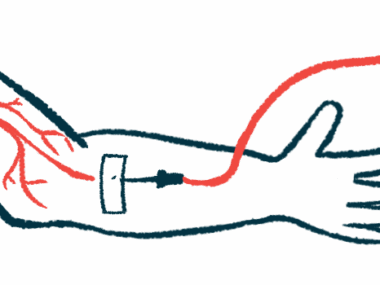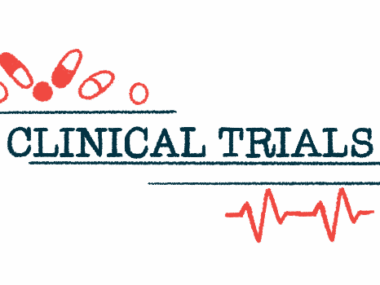Tavneos better than prednisone for treating ear, nose, throat symptoms
The findings were presented at EULAR 2024 Congress in Vienna
Written by |

Tavneos (avacopan) is better than the glucocorticoid prednisone at promoting disease remission, lowering relapse rates, and improving quality of life in ANCA-associated vasculitis (AAV) patients with active ear, nose, or throat (ENT) manifestations.
That’s according to new subgroup analyses from the Phase 3 ADVOCATE clinical trial (NCT02994927). Topline data from the study supported the therapy’s approval as an add-on to standard induction treatment, including glucocorticoids, in adults with severe active granulomatosis with polyangiitis (GPA) or microscopic polyangiitis (MPA), the most common types of AAV.
These and other ADVOCATE subgroup findings were presented at the European Alliance of Associations for Rheumatology’s (EULAR) 2024 Congress, which took place last month in Vienna, according to a press release from Amgen, which markets Tavneos.
“Two aspects of severe active ANCA-associated vasculitis that can be troubling to patients are the disease’s ear, nose and throat manifestations and the need for ongoing use of oral [glucocorticoids],” Irene von Hennigs, vice president, U.S. medical affairs therapeutic area head, inflammation and vasculitis/rare disease at Amgen, said in an email to ANCA Vasculitis News. “Two new analyses from the ADVOCATE trial found that TAVNEOS had a more favorable remission and lower relapse rate across subgroups, showing promising results for these patients with … ENT involvement.”
In the autoimmune condition AAV, the excessive activation of the immune system’s complement cascade results in inflammation and damage to small blood vessels. ENT involvement is common in AAV and negatively affects patients’ quality of life.
Glucocorticoids such as prednisone, which are anti-inflammatory and immunosuppressive, are often used to control AAV and help achieve remission. Their long-term use often comes with serious side effects, such as increased risk of weight gain, high blood pressure, diabetes, and sleep and mental health problems, however.
Tavneos is a twice-daily oral medication that suppresses the complement cascade’s activation. Its regulatory approvals were based mainly on data from the ADVOCATE trial, which included GPA or MPA patients, 12 years and older. Topline results showed Tavneos was as effective as a prednisone taper, on top of other standard treatment, at helping patients achieve remission after 26 weeks, about six months, and better than prednisone at sustaining remission after 52 weeks, about one year.
Treatment with Tavneos
In the oral presentation “Avacopan Versus Prednisone Taper in Patients with ANCA-associated Vasculitis and Ear, Nose, or Throat Involvement in the ADVOCATE Trial,” researchers presented outcomes of the subgroup of 144 trial participants with ENT involvement at the study’s start.
Similar to data from all the participants, Tavneos-treated patients with ENT involvement were about as likely to achieve remission at six months (72% vs. 71%), but more likely to show sustained remission at a year relative to those on prednisone (62.7% vs. 53.6%).
Also, the proportion of patients having active ENT symptoms was lower in the Tavneos group than the prednisone taper group after a month (21.3% vs. 36.2%) and a year (2.9% vs. 7.6%). Fewer Tavneos-treated patients had relapses of their ENT manifestations (14.9% vs. 19.7%) and Tavneos was associated with greater gains in health-related quality of life over prednisone.
On average, those taking Tavneos used less than half the total dose of glucocorticoids in the first month than those on the prednisone taper (680 vs 1,677 mg), and had fewer glucocorticoid-related side effects after six months. The rates of infections and serious adverse events were comparable between the groups. There was one death in the Tavneos group, which was due to worsening AAV.
Despite similar safety profiles, Tavneos “was associated with faster resolution of ENT manifestations, higher rate of overall sustained remission, lower relapse rate, numerically lower [glucocorticoid-related] toxicity, [and] greater improvement in [health-related quality of life],” the researchers wrote in the abstract. “These data indicate [Tavneos] may be efficacious in patients with ENT involvement of GPA/MPA.”
In the poster “Data from the ADVOCATE trial on 28 patients with ANCA-associated vasculitis who received avacopan without concomitant glucocorticoid use in the first 29 days,” the researchers shared outcomes from participants who didn’t use glucocorticoids.
In ADVOCATE, participants could use glucocorticoids to control worsening disease. However, among those assigned Tavneos, 28 (16.9%) didn’t use glucocorticoids during the first 29 days, roughly a month. Most of these were newly diagnosed (78.6%) and had active kidney problems at the study’s start (92.9%).
The same proportion of patients (75%) who reached remission at six months also had sustained remission at a year, indicating no relapses after six months. Of the six patients who used glucocorticoids at some point thereafter, four (67%) didn’t achieve remission. These patients also saw improvements in kidney function and quality of life.
Eleven of these patients never used glucocorticoids at any point during the trial and all achieved and sustained remission through one year, “indicating this may be a potential treatment course option in this population type,” the researchers wrote in the abstract.
“We are deeply committed to advancing patient care through continuous innovation and rigorous science,” Jay Bradner, MD, executive vice president of research and development and chief scientific officer at Amgen, said in the release. “The data presented at EULAR 2024 further demonstrate our efforts to address complex diseases. By advancing scientific research, we are not only enhancing our understanding of these conditions, but also paving the way for more effective treatments that have the potential to significantly improve patient outcomes.”






